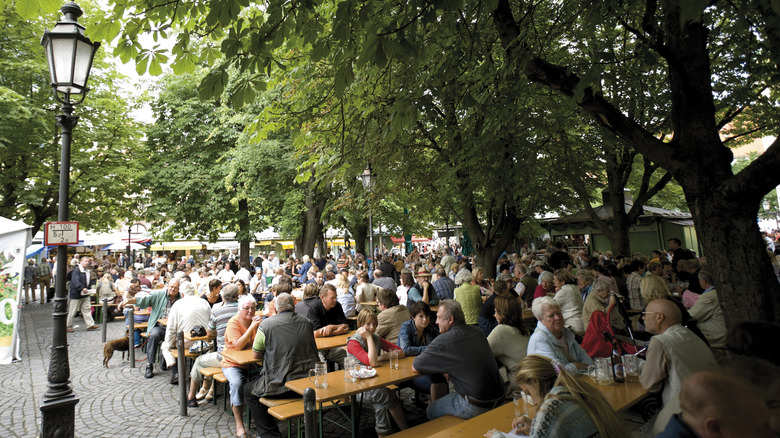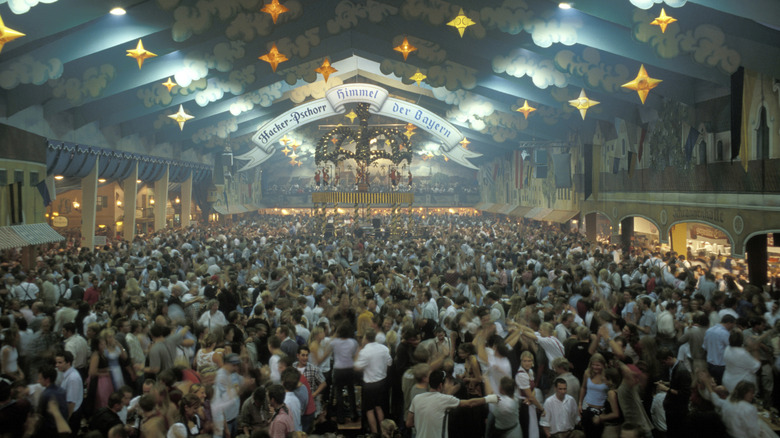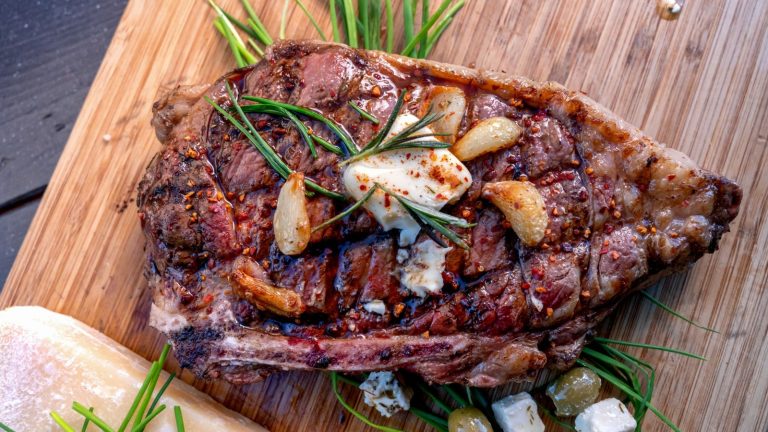While there’s no shame in sipping a brew amid the comforts of home, a drink enjoyed while out and about delights with an extra buzz. Not only does fresh beer on tap benefit from enhanced flavor, but there’s a convivial magic to the experience. And while there are a variety of contexts in which to enjoy a keg, few can match the atmospheric scale of a beer hall or garden. The scale of hundreds — and sometimes thousands — of simultaneous beer drinkers sets a uniquely jovial ambience.
Subsequently, while in search of such a vibrant setting, you may wonder what separates a beer garden from a beer hall. Well, most simply, it’s in the roof and doors: A beer hall is usually an enclosed space while a garden is set outdoors typically among trees and other greenery. Yet there’s more to the delineation than simply the environs: Both are concepts that were popularized by Germany and have now found widespread popularity along with particular cultural associations.
Beer halls host celebrated festivities like Oktoberfest in Bavaria, while beer gardens promote a relaxed, family-friendly place for drinking. And their development not only accelerated the enjoyment of easy-drinking lagers or pilsners, but they also established a new style of drinking still popular today.
A beer garden refers to an expansive outdoor drinking space
Although the precise specifics might shift, beer gardens typically come with several unifying features. They operate with expansive real estate, packing in a multitude of tables and chairs, usually without any fancy furnishing. Some trees and other greenery add color to the surroundings, and there might be a stage for live music as well as bar games. Children, pets, and non-drinkers are usually welcome, making it an easy social meeting place. Meanwhile, food comes from trucks, or a kitchen cooking up ideal food pairings for lagers like pretzels, barbecue, or bratwurst. And last, but certainly not least, the brews often come drinkable: like a lager, pilsner, or hefeweizen, perhaps served in a big stein.
Especially for Americans in places like Central Texas, the Midwest, and New York, such descriptors likely sound familiar. Indeed, by way of German immigrants, beer gardens were thriving in these regions of the United States by the mid-19th century. In fact, some of the largest and most elaborate gardens opened in the second half of the 1800s, involving impressive designs with bowling alleys and concert halls. And the concept itself traces further back to as early as 16th century Bavaria, when new government regulation caused brewers to open riverside beer-drinking areas.
So rest assured, the concept of lively outdoor imbibing has been around for a long time. The Prohibition along with anti-German sentiment nearly erased American beer gardens during the early 20th century, but the resurgence is going strong, offering a delightfully accessible outdoor drinking space.
Expect a Bavarian theme in a beer hall
By definition, a beer hall must be indoors, which is its most distinguishing characteristic. However, rather than simply a large brew-focused bar, this type of business carries even stronger German ties. Beer halls are a celebrated part of life in Munich, Germany, a historic outlet for Bavarian brewing culture. Halls like the renowned Hofbräuhaus encompass more than four centuries of history, still pouring out steins for hundreds of regulars. Furthermore, Bavarian beer halls (as well as expanded tents) host the world-famous Oktoberfest, which serves traditional German beers to thousands.
Such rich cultural traditions have generally kept beer halls focused on a Bavarian theme as opposed to the more diverse atmosphere of a beer garden. Even when opened abroad — like the historic Ginza Lion Building in Tokyo — the beer and food offerings as well as vaulted ceilings and wooden interior typically allude to traditional German elements.
So if you enter a beer hall, you can dependably expect the large one- or half-liter stein mugs filled with Bavarian beers such as helles, bockbier, or dunkel. Each hall typically serves beer of a certain brewer, attracting devoted fans of the style. With free-flowing crowds in a large space with echoing voices and oftentimes music, it’s a cheerful and proud backdrop for enjoying beer.







